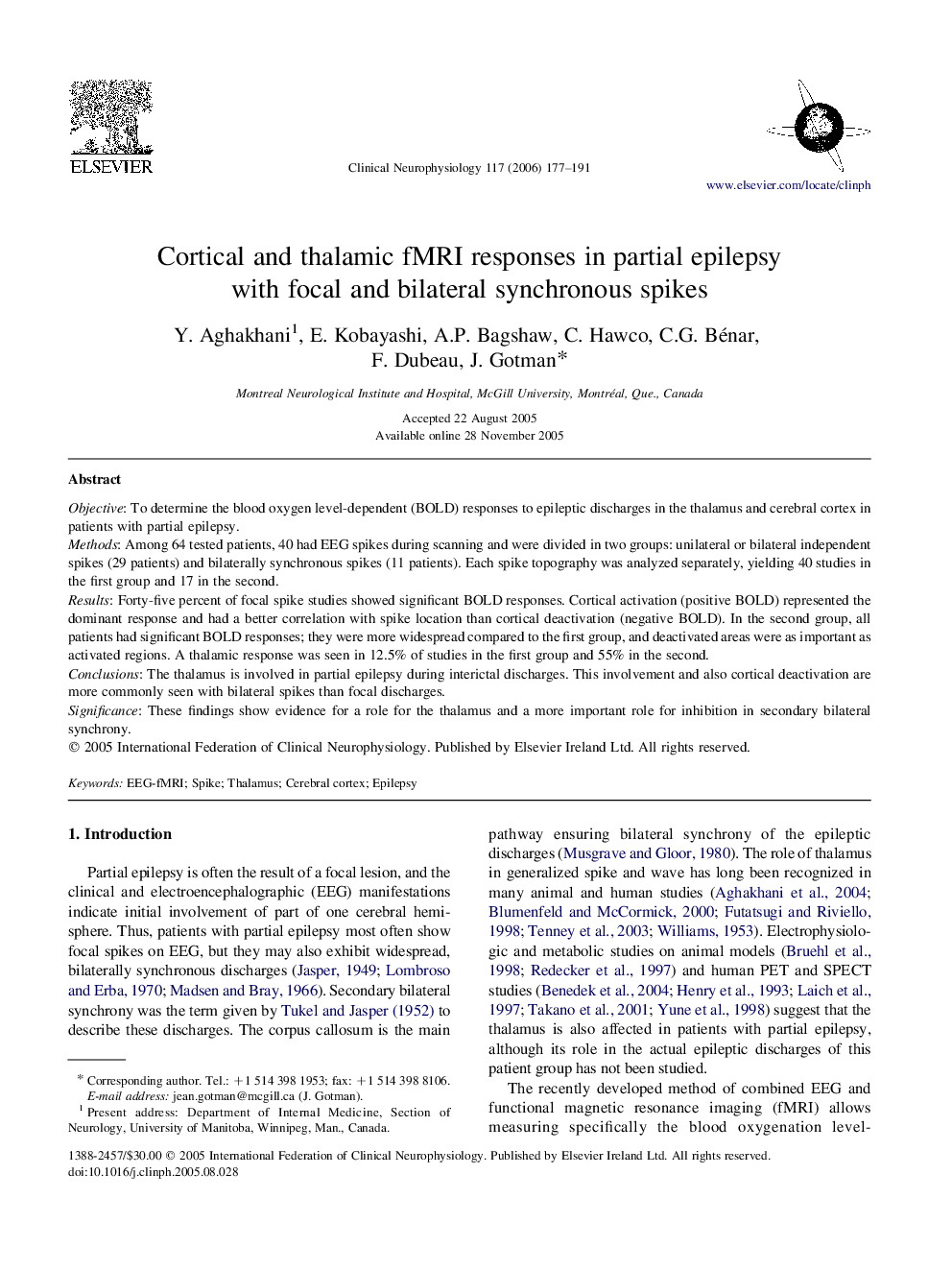| Article ID | Journal | Published Year | Pages | File Type |
|---|---|---|---|---|
| 3048079 | Clinical Neurophysiology | 2006 | 15 Pages |
ObjectiveTo determine the blood oxygen level-dependent (BOLD) responses to epileptic discharges in the thalamus and cerebral cortex in patients with partial epilepsy.MethodsAmong 64 tested patients, 40 had EEG spikes during scanning and were divided in two groups: unilateral or bilateral independent spikes (29 patients) and bilaterally synchronous spikes (11 patients). Each spike topography was analyzed separately, yielding 40 studies in the first group and 17 in the second.ResultsForty-five percent of focal spike studies showed significant BOLD responses. Cortical activation (positive BOLD) represented the dominant response and had a better correlation with spike location than cortical deactivation (negative BOLD). In the second group, all patients had significant BOLD responses; they were more widespread compared to the first group, and deactivated areas were as important as activated regions. A thalamic response was seen in 12.5% of studies in the first group and 55% in the second.ConclusionsThe thalamus is involved in partial epilepsy during interictal discharges. This involvement and also cortical deactivation are more commonly seen with bilateral spikes than focal discharges.SignificanceThese findings show evidence for a role for the thalamus and a more important role for inhibition in secondary bilateral synchrony.
